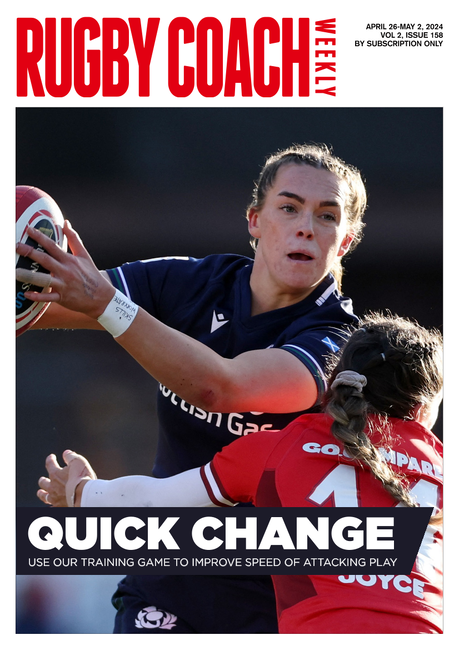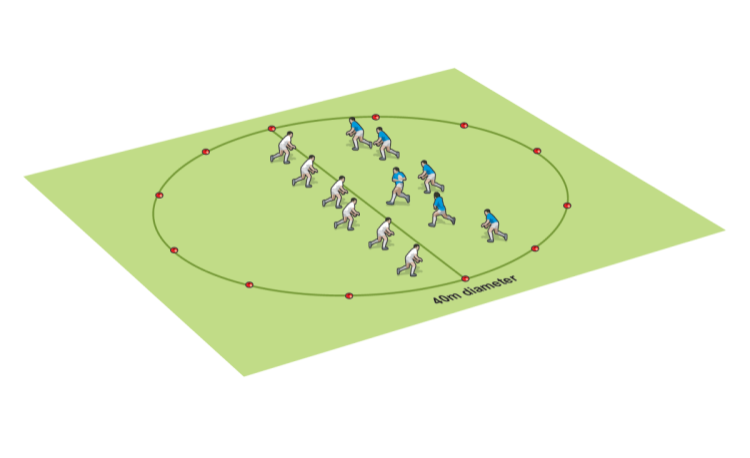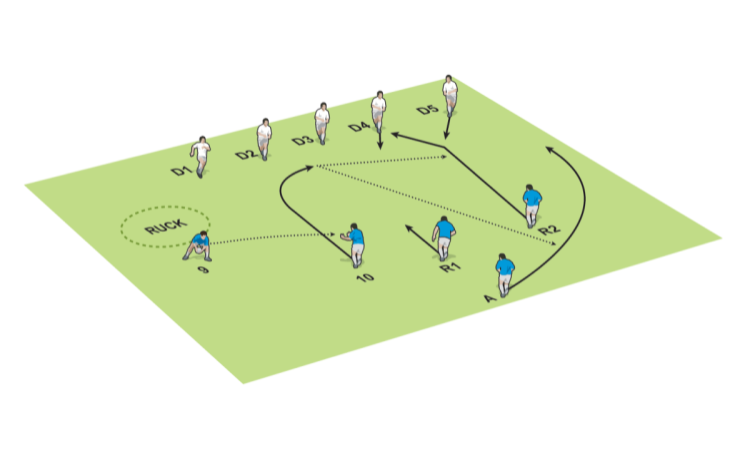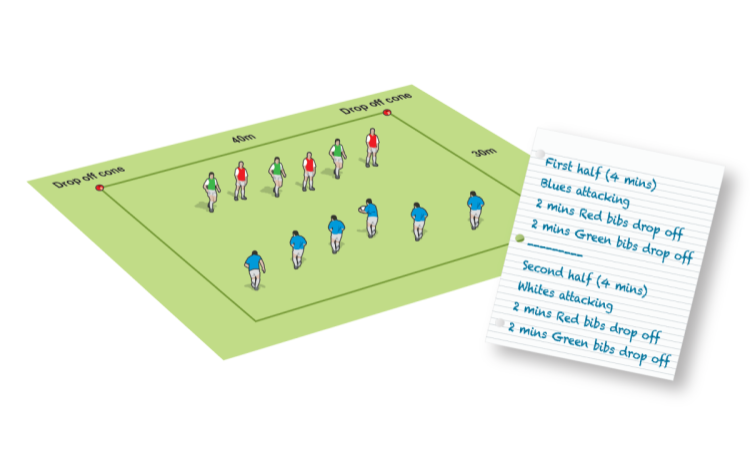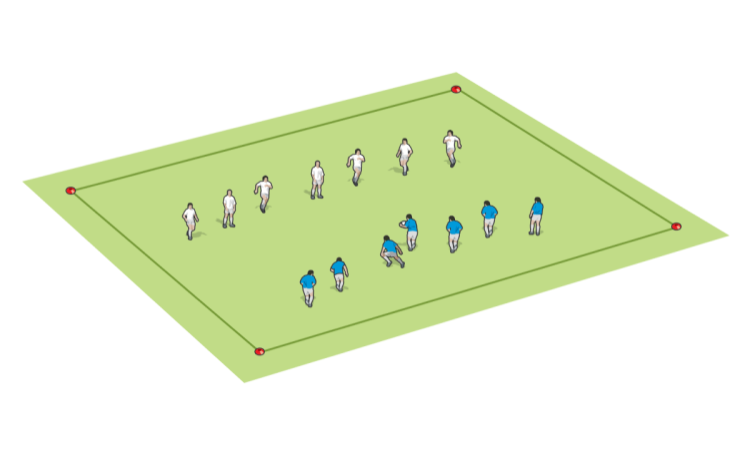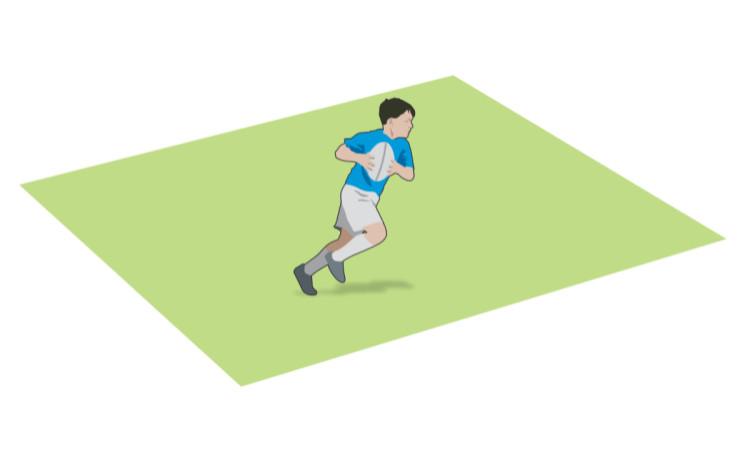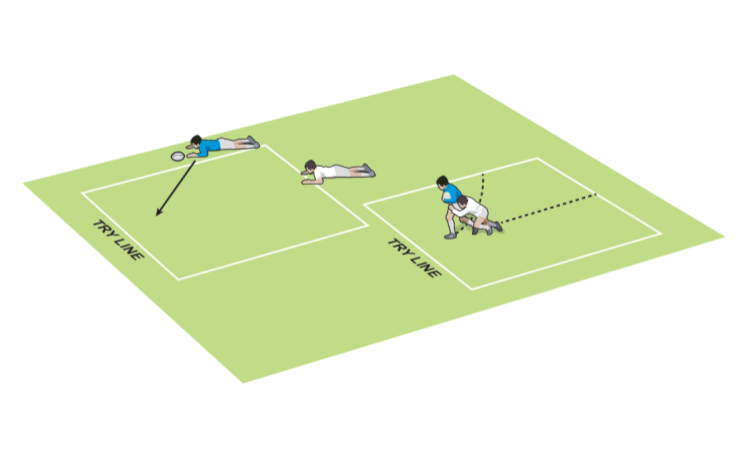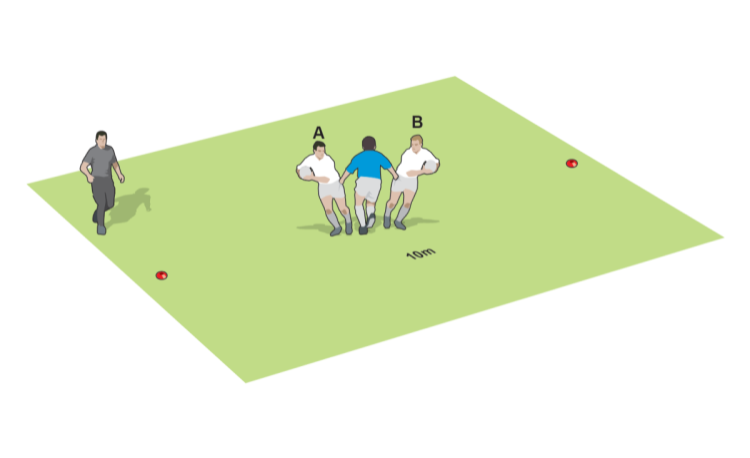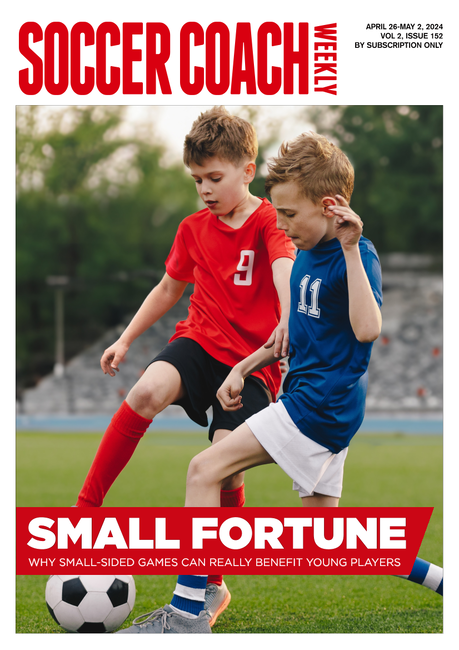You are viewing
1 of your 2 free articles
Drop-out pressure game
Small-Sided Gamesby Mark Calverley
Challenge your players to work out better ways to use the 22m drop-out as a way of pressurising the opposition. This fun game promotes accurate kicking, hard chasing and role understanding.
The game rewards good decisions and skill execution around the 22m set piece.


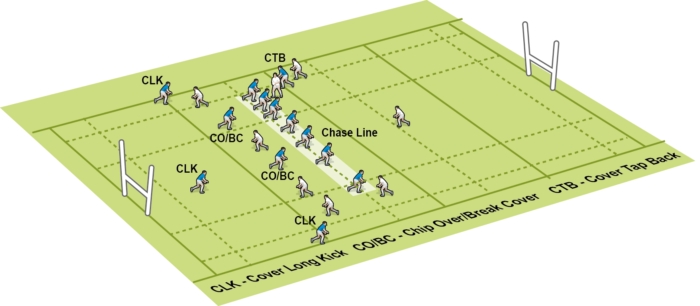
For the kicker
The game rewards good decisions and skill execution around the 22m set piece.

- The team of 12 (the “attack”) takes a total of 10 kicks, which must land in one of the four zones (marked with cones).
- Kicks not landing in a zone are retaken.

- The teams compete for the ball.
- A regained, clean ball is worth two points to that side.
- If the attack can’t gain possession, they must win it back. For every 30 secs the defence have the ball, they gain a point. So they’ll want to play “possession” rugby.
- If the attack wins the ball and makes at least 20m with a kick, they earn two points.
- Any mistake (a knock-on or penalty offence) results in a point to the other side.

- Allocate roles to the chasers
TECHNIQUE
For the kicker
- Kicks to zones 2, 3 and 4 should be in the air for 3-4s
- Kicks to zone 1 are low and short. Only use if the defence doesn’t cover that space
- Kicks to zones 2, 3 and 4 should see players arrive as the ball falls, with at least one ahead of it for a tap back.
- The defensive line follows up in line.
- The 9 and kicker should trail behind to cover an opposition chip kick or break.
- Cover the back-three spots to stop a long territory kick
Related Files
Vol-2-Issue-047-RCW-drop-out-pressure-game.pdfPDF, 548 KB
Newsletter Sign Up
Coaches Testimonials

Gerald Kearney, Downtown Las Vegas Soccer Club

Paul Butler, Florida, USA

Rick Shields, Springboro, USA

Tony Green, Pierrefonds Titans, Quebec, Canada
Subscribe Today
Be a more effective, more successful rugby coach
In a recent survey 89% of subscribers said Rugby Coach Weekly makes them more confident, 91% said Rugby Coach Weekly makes them a more effective coach and 93% said Rugby Coach Weekly makes them more inspired.
Get Weekly Inspiration
All the latest techniques and approaches
Rugby Coach Weekly offers proven and easy to use rugby drills, coaching sessions, practice plans, small-sided games, warm-ups, training tips and advice.
We've been at the cutting edge of rugby coaching since we launched in 2005, creating resources for the grassroots youth coach, following best practice from around the world and insights from the professional game.
More from us
© 2023 Rugby Coach Weekly
Part of Green Star Media Ltd. Company number: 3008779
We use cookies so we can provide you with the best online experience. By continuing to browse this site you are agreeing to our use of cookies. Click on the banner to find out more.

